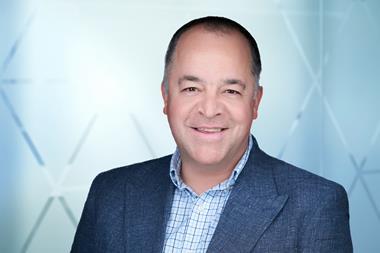Insurer’s combined operating ratio rises to 100%, but chief exec Andrew Horton says a mid-90s COR is “realistic” for 2020
Beazley reported a profit before tax of $267.7m (£201.8m) for 2019, an increase of 250% on 2018’s $76.4m.
The boost in profits was largely down to an improved investment return of $263.7m, up from $41.1m in 2018. This helped offset a deterioration in the insurer’s combined operating ratio (COR) to 100% (2018: 98%), which was driven by rising claims and reduced reserve releases from previous years.
Writing in the insurer’s annual report, chief executive Andrew Horton said that natural catastrophes took a “smaller toll” on the insurer’s business than in 2018, but that the risk still had a “material impact with our estimated costs of Typhoons Faxai and Hagibis and Hurricane Dorian totalling approximately $80m net of reinsurance and reinstatement premiums”.
The insurer has also been struggling with rising claims inflation for its liability lines, largely driven by increasing US jury awards, which, combined with the impact of catastrophe claims, led to the insurer only being able to release $9.5m from prior year reserves in 2019, compared to $115.0m in 2018.
Despite this small net release from reserves, the insurer did have to strengthen reserves for a number of lines, injecting additional funds into reserves for its reinsurance ($30.1m), property ($17.1m) and marine ($6.4m) books of business.
Announcing the insurer’s annual results, Horton said: “Beazley achieved a profit before tax of $267.7m in 2019, driven by a very strong investment return of $263.7m. Overall gross premiums written increased by 15% to $3,003.9m, with three of our six divisions achieving double digit growth.
“An adverse claims experience across several lines of business, leading to reduced prior year reserve releases, meant that our combined ratio rose to 100% for 2019. Despite this, we are optimistic that the remedial action that we have been taking across several lines of business in recent years, alongside the expected continued premium rate increase, will favour us as we move into 2020.”
Despite this worsening of the COR, Horton says that over the medium-term Beazley is aiming for a COR in the low-90s, but that “a combined ratio in the mid-90s is a more realistic expectation for 2020 subject to a more normalised claims environment”.
Rates on the rise
The insurer says that the 15% increase in gross written premiums has been driven by ongoing rate increases in many markets as a result of rising claims costs, as well the reversal of sustained rate reductions across a number of lines up to the end of 2017.
Beazley increased its own rates by an average of 6% in 2019, with larger increases in lines such as directors’ & officers’ (31%), hospital professional liability (15), aviation (27%), and large risk property (18%).
Writing in the insurer’s annual report, Beazley chairman David Roberts said the insurer was now operating “in a market in which rates are often adequate to achieve profitable growth but significant pockets of underpriced business remain”, and said that he believed this “plays to all of Beazley’s traditional strengths as a company, in risk selection, reserving and claims management”.
Hosted by comedian and actor Tom Allen, 34 Gold, 23 Silver and 22 Bronze awards were handed out across an amazing 34 categories recognising brilliance and innovation right across the breadth of UK general insurance.




















































No comments yet